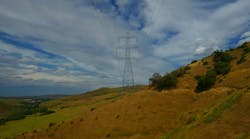The Reliability 2000 project began with military-like precision. The worse-performing feeders in the FPL system were identified and rebuilt or repaired, line-clearing efforts were doubled, lightning protection was upgraded, standards compliance was encouraged, customer-impact projects were funded and a multiple-interruption program was initiated for feeders and laterals.
* The feeder-cable replacement project requires that the first section of a feeder coming directly from a substation be replaced after the first failure and that any other section be replaced on the second failure.
* From 1997 through 1999, FPL's vegetation management unit maintained more than 19,500 miles (31,200 km) of line. This is roughly the same distance as four round trips from Miami, Florida, to Los Angeles, California, U.S. Near the end of 1998 and into 1999, the group developed a dynamic model to vary trim and removal efforts throughout FPL's service territory. The model was designed around such variables as Florida's diverse geography, species composition and feeder reliability.
* Standards compliance solicits observations from the field. If, for instance, an employee driving to work spots a bad crossarm or broken lightning arrester, that employee is encouraged to identify the location and refer the work to the service center. Before Reliability 2000, such a proactive approach would have been dismissed. If it wasn't on a trouble ticket, it wasn't serviced. Now, observations from the field are applauded. If a bad crossarm can be replaced before it fails, all the better.
* Customer impact projects give service areas the flexibility and funding to resolve smaller reliability issues. For example, if an area needs to close radial underground laterals to improve service to customers, it now has the resources to do so.
* The multiple-interruption program targets customers who have experienced multiple feeder and lateral outages during a 12-month period. In most cases, those feeders and laterals are investigated and repaired before a customer submits a complaint. Rarely does a customer's inquiry about a particular line's performance initiate an investigation. Usually FPL's data analysis has already identified the feeder or lateral as a poor performer, and actions are underway to fix it.
Because Reliability 2000 did not take an open-wallet approach to improving electric service to customers, technology was employed to gain efficiency and maintain cost effectiveness. Thermovision, a process that uses an infrared camera to detect hot spots on equipment, was used to inspect and uncover potential problems on feeders before failures occurred (see related article, "Infrared Inspection Hits the Road," Transmission & Distribution World, May 2000, page 52). Data telemetry was installed on hundreds of feeders to provide real-time load information. An aggressive cable injection program pumped life into miles of underground cable that was beginning to fail at an alarming rate.
* Prior to Thermovision, more than 50 percent of the problems on a line were missed because those problems were not visible. Thermovision's infrared eye uses color to detect trouble on equipment. In effect, it takes the temperature of the equipment and can diagnose which piece of equipment is "sick" before it fails. The process allows almost all problem spots on a feeder to be captured.
* Real-time data telemetry takes the guesswork out of correcting overloaded lines. When a major power line begins to reach its load capacity, load is shifted to other lines to prevent interruptions.
* Nearly 5300 miles (8480 km) of Florida coastline comprises part of FPL's service area and exposes its electric facilities to corrosive agents such as saltwater intrusion. This intrusion was accelerating the deterioration of direct-buried underground cable and increasing failures. Cable injection was a cost-effective alternative to digging up the cable and replacing it. This process involves injecting a silicone fluid that seals the cracks in the cable and restores the cable to near-new condition.
Reliability 2000 initiatives have steadily improved the distribution business unit. In 1997, system unavailability peaked at 157 min. By the end of 1999, the average number of minutes customers were without power had dropped to 75 min-a 52 percent improvement.

